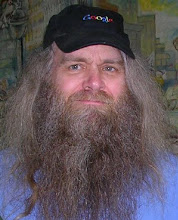I've been meaning to look closer at it, and this random link about how the brain represents habits seemed like a convenient moment... because the ontology-connections are especially bizarre.
It's easier if you jump directly to the fullpane view of the browser (identical url with "?tag=st.bp" at the end, where bp = big picture).
The story-author (or an editor) is supposed to tag each story with topical keywords (green bubbles) and mentioned-companies (red bubbles), but this story doesn't actually have either of these-- the three green and one red bubble you see here are linked via other 'similar' stories (grey bubbles), though you have to look closely to figure this out.
The author/editor has directly specified three 'similar' stories, which can be traced on the browser by following the grey lines from the central story-bubble:
- One goes NNW to "Are we getting smarter or dumber?" which has no secondary links, for no obvious reason. (If you click on it, you'll see it does have green bubbles for "Internet" and "Education".)
- One goes due south to "IBM sells Blue Gene for brain research" which has zillions of secondary links. (But if you click on it, you lose the backlink to the original article!? There's a 'Reset' button down there, for this emergency.)
- One goes SE to "Harvard brain images: Cat vs rat" which is linked only to the green R&D bubble (you may have to click on some whitespace to get this to scroll into view). If you click on this story you'll see it does have more hidden grey and green links, so apparently the due-south link has been arbitrarily favored for expansion (maybe because it has the most links?).
These three similar-story links are appropriate and useful, and as a basic rule of web-design all web-articles should probably offer such a short set at the end, because many readers will at that point be ready to explore. I think Cnet was already doing that in text form, maybe in a sidebar though (which is less effective).
Someone should have added "MIT" as a red-bubble link-- I expect this will become more routine. It needs at least one green bubble for "Neuroscience".
The supposed rationale for using graphics instead of just text is that similar items can be visually clustered, but this isn't what's happening here-- the most similar stories are getting buried in random linkage.
Whenever I see a floating-bubbles interface (and I'm ashamed to say I even programmed an early one, back in 1990), I think of a bad stage magician waving his hands to distract you while he picks your pocket.
Cnet's readers would be much better served if this info was offered in text-outline form, maybe with fast Ajax browsing.
